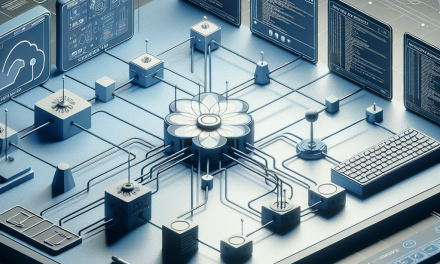As the adoption of Kubernetes continues to grow, the demand for effective container monitoring has never been more critical. Monitoring your Kubernetes environment ensures that applications run smoothly, performance is optimized, and downtime is minimized. In this article, we will explore best practices for Kubernetes container monitoring, enabling you to maintain a robust and efficient containerized environment.
1. Embrace a Holistic Monitoring Approach
Metrics, Logs, and Traces
To effectively monitor your Kubernetes cluster, it’s essential to adopt a holistic approach that incorporates metrics, logs, and traces. Each of these elements provides different insights:
- Metrics allow you to track resource usage, throughput, and performance trends.
- Logs help diagnose issues by providing detailed information about what transpired during application runs.
- Traces visualize the flow of requests through the system, making it easier to isolate performance bottlenecks.
Combining these data types provides a comprehensive view of your environment, enabling informed decision-making.
2. Leverage Kubernetes Native Tools
Kubernetes offers several built-in tools to aid in monitoring:
- Metrics Server: Collects resource metrics and provides a foundation for autoscaling.
- Kube-state-metrics: Exposes metrics about the state of Kubernetes objects, such as deployments and nodes.
- Prometheus: Widely used for aggregating metrics, Prometheus can scrape metrics from various endpoints and is highly customizable.
Utilizing these tools helps you streamline your monitoring setup and integrates seamlessly with Kubernetes.
3. Adopt a Service Mesh
In complex Kubernetes environments, a service mesh like Istio or Linkerd can enhance monitoring capabilities significantly. A service mesh provides:
- Traffic Management: Control over how traffic flows between services aids in troubleshooting.
- Enhanced Observability: Provides insights into service interactions and performance, which can highlight latency issues.
Integrating a service mesh simplifies the monitoring of microservices and helps pinpoint performance issues more effectively.
4. Set Up Alerts and Notifications
Proactive monitoring means not just keeping an eye on metrics, but also being alerted when something goes wrong. Define meaningful thresholds for your metrics to trigger alerts. For example:
- High CPU or memory utilization.
- Unsuccessful request rates surpassing a certain threshold.
- Pod restarts or failures.
Use tools like Prometheus Alertmanager to configure alerts and integrate them with communication channels like Slack or email for immediate notifications.
5. Log Management Practices
Logs can quickly become voluminous and unwieldy if not managed effectively. Consider the following:
- Centralized Logging: Use tools like Elasticsearch, Fluentd, and Kibana (EFK stack) to centralize log management. This simplifies searching and analyzing logs across your cluster.
- Structured Logging: Logging in a structured format (like JSON) makes parsing easier and enhances the ability to query logs.
By adopting effective log management practices, you can enable faster root cause analysis and operational troubleshooting.
6. Use Resource Requests and Limits
Setting appropriate resource requests and limits for your containers is crucial for effective monitoring and resource management. Define the minimum resources your containers require (requests) and the maximum they can utilize (limits). This not only ensures optimal resource allocation but also prevents any single container from consuming excessive resources, which can lead to performance degradation.
7. Optimize Node and Pod Monitoring
Monitoring at the node and pod levels can provide granular visibility into resource usage. Utilize tools like:
- Node Exporter: For collecting hardware and OS metrics from the nodes.
- cAdvisor: For monitoring container resource usage and performance characteristics.
These tools help ensure that both the infrastructure and the applications running on your Kubernetes cluster are performing optimally.
8. Automate with CI/CD Pipelines
Integrate monitoring into your CI/CD pipelines to automate the deployment and verification process. This allows teams to continuously monitor application performance and health after each deployment, facilitating quicker rollbacks in case of failures and higher overall application reliability.
9. Continuous Improvement
Finally, monitoring is not a one-time setup; it requires continuous improvement. Regularly review and update your monitoring strategy based on new insights, evolving application architectures, and changing organizational needs. Establish a feedback loop to assess the effectiveness of your monitoring tools and practices.
Conclusion
Effective Kubernetes container monitoring is vital for the success of your containerized applications. By implementing these best practices, you can enhance visibility, optimize performance, and mitigate risks in your Kubernetes environment. As container orchestration continues to evolve, stay committed to refining your monitoring strategies to keep pace with changing technologies and demands.
With these guidelines, WafaTech Blogs aims to empower your Kubernetes journey, ensuring you have the tools and knowledge necessary to achieve operational excellence.





